Architect Malcolm Walker designs a holiday home with a compact footprint on a stunning site
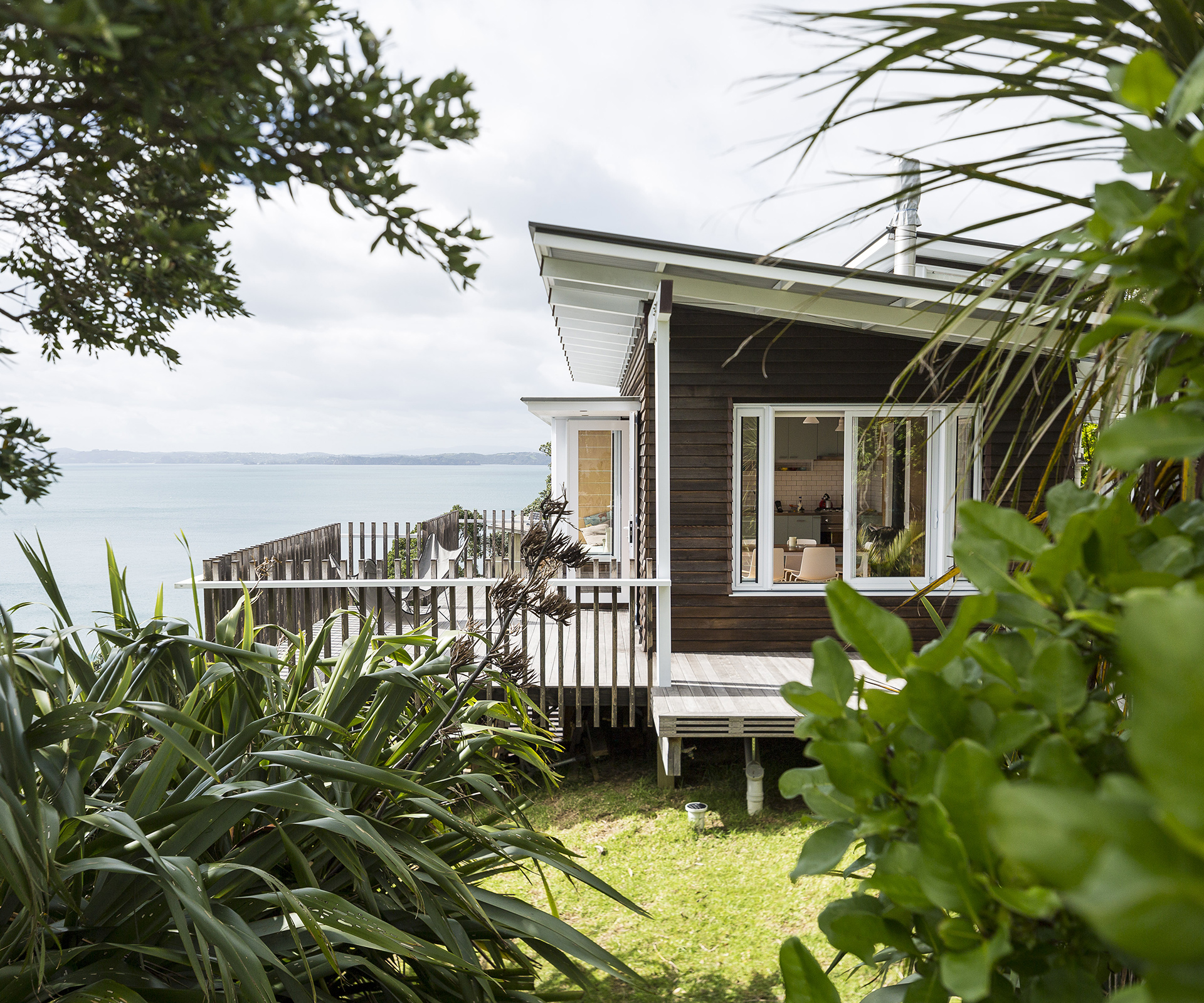
A Rakino Island getaway that keeps things simple
The single road through Rakino Island in the Hauraki Gulf rises and falls in rhythm with the bite-size coves that indent the island’s coastline. Above Maori Garden Bay, where the friable loam was once farmed with kumara and yams, the homes in the Golden Heights development face east. For holidaymakers, sunrise is a gentle, luminescent alarm clock, revealing the lumpy forms of The Noises peeking out of the ocean before it creeps into the windows, turning the plywood walls of Milton Candish and Penny Harvie’s home into a golden honeycomb.

When Candish, a builder, first camped out here on his good friend’s patch, he was captivated by the view that swept all the way to the Colville Channel – a gap that frames Great Barrier Island in the far-off haze. “I liked that there were no shops and that the whole island was off-grid,” he says. In 1998, he paid $40,000 for the 1000-square-metre section next door.
Apart from property values, little has changed in 18 years. Near the ferry wharf, a line-up of warrantless cars, their bellies brushed by buffalo grass, awaits the arrival of absent owners. The local population of permanent residents stands at 16.
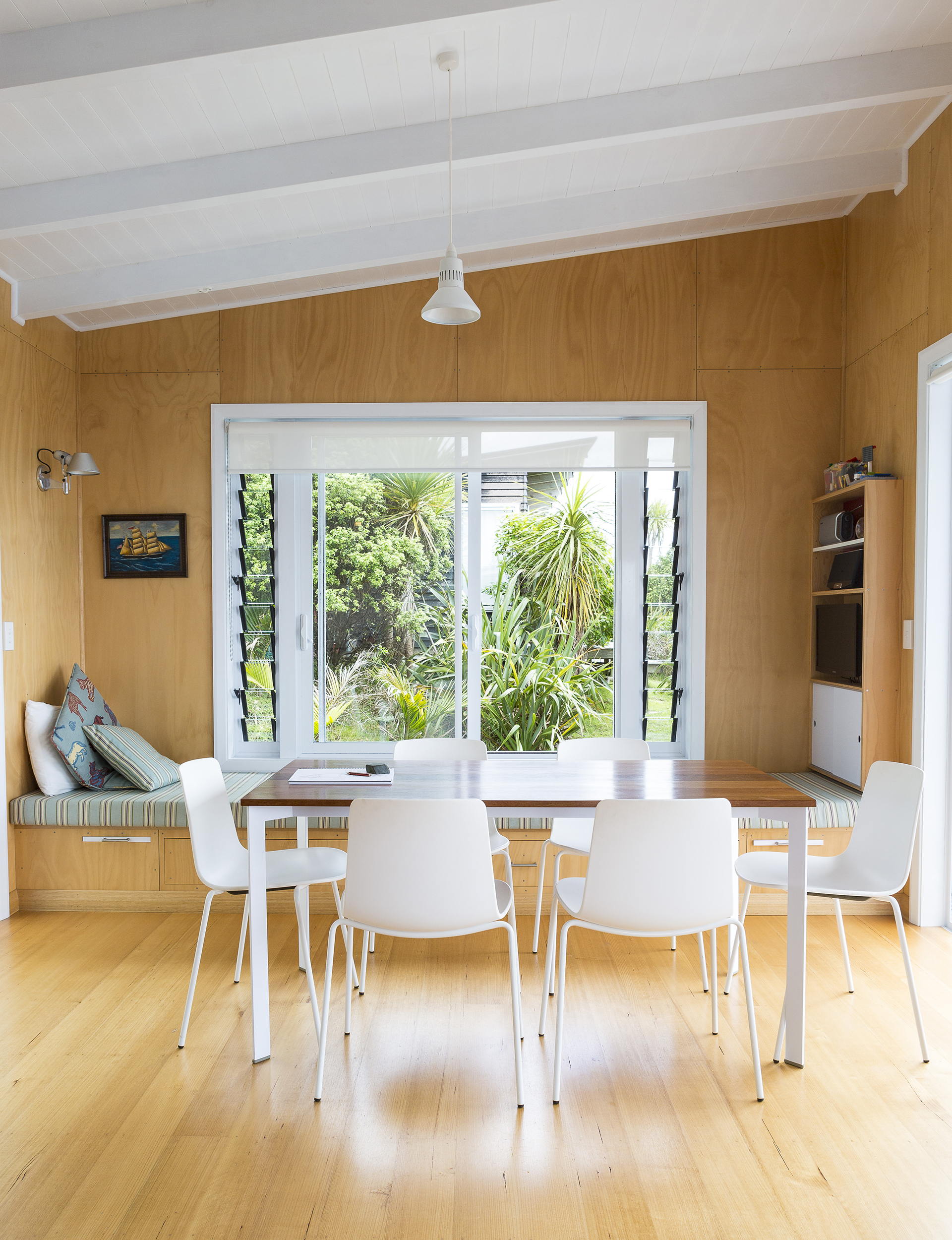
In keeping with island time, progress on the site was made slowly. The 50-square-metre holiday home that Candish built for his young family has been habitable for four Christmases and is an ongoing labour of love. Each weekend, Candish makes the picture a little more complete, fencing off the surrounding paddock so the sheep can’t get trapped beneath the elevated deck, or crafting a zigzag set of steps as sculptural access.

Architect Malcolm Walker designed the bach next door so, in an organic process, his enthusiasm for the island meant it seemed entirely natural to help Candish with this project. Walker’s instinct was that a “genius” site needed nothing more than simplicity. His approach also allowed this home to commune with its neighbour. “We picked up on the architectural language and forms of Vernon Brown’s houses of the 30s to the 50s,” says Walker, an approach that is particularly evident in the home’s dark timber and white window frames, a signature of Brown’s.
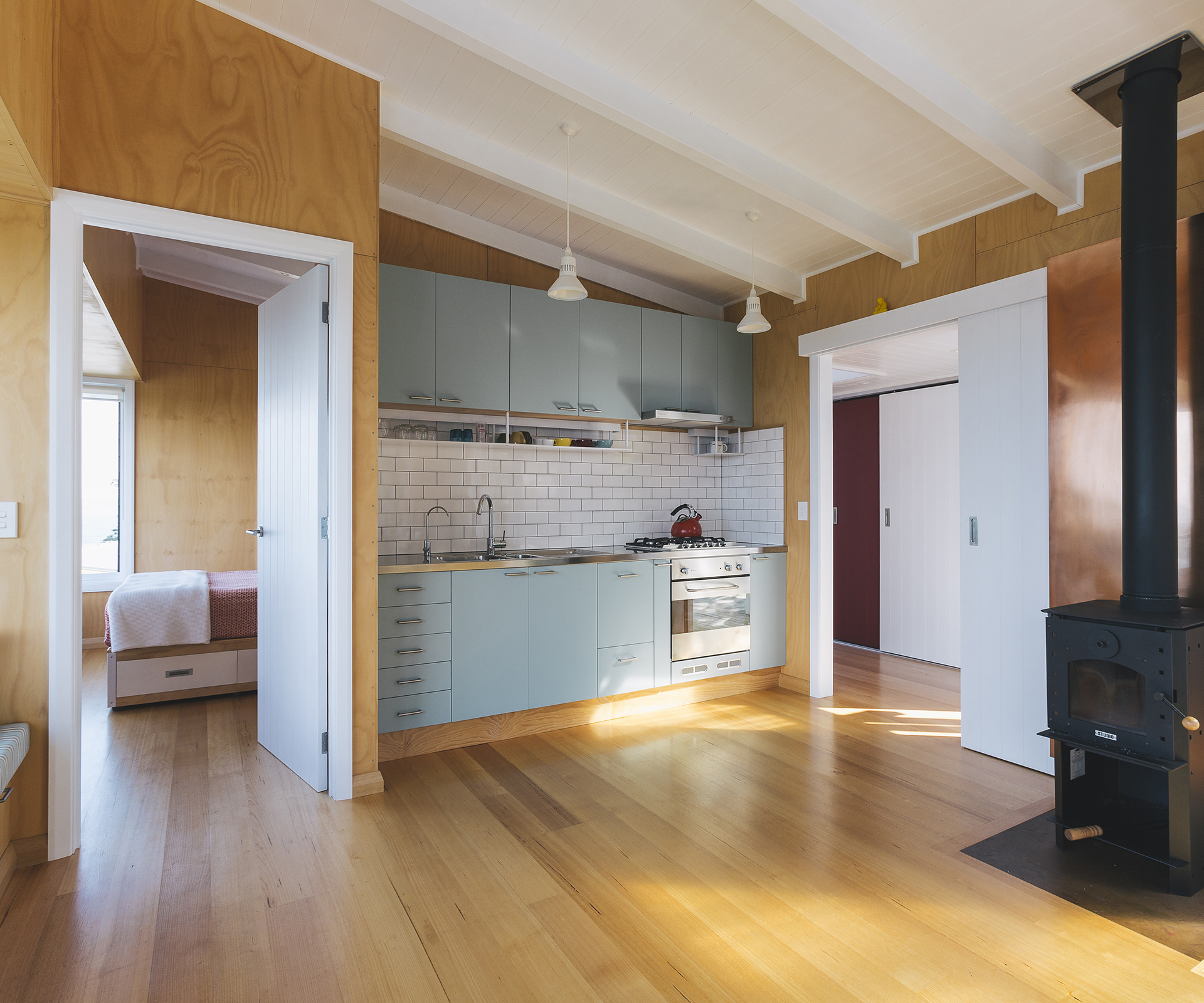
He presented the plans as hand-drawn sketches: a monopitch cabin tucked into the hillside. “It’s a porous space, a small refuge to walk through,” says Walker.
The bach may appear unpretentious, but its planning is far from basic. Within the compact footprint, every inch is actively explored. A utilitarian zone accessed from the back deck contains the shower and loo as well as a separate pantry and generous chest freezer. At the front of the home, the living area and main bedroom face the sea. Storage is slipped beneath window seats along with pull-out trays where visitors can perch a cup of coffee or a book. There are no couches or coffee tables. Fun is part of this thoughtful functionality. Walker incorporated a jaunty pop-top room that is accessed by a ladder and contains built-in day beds which add to the ‘sleeps’ quota.
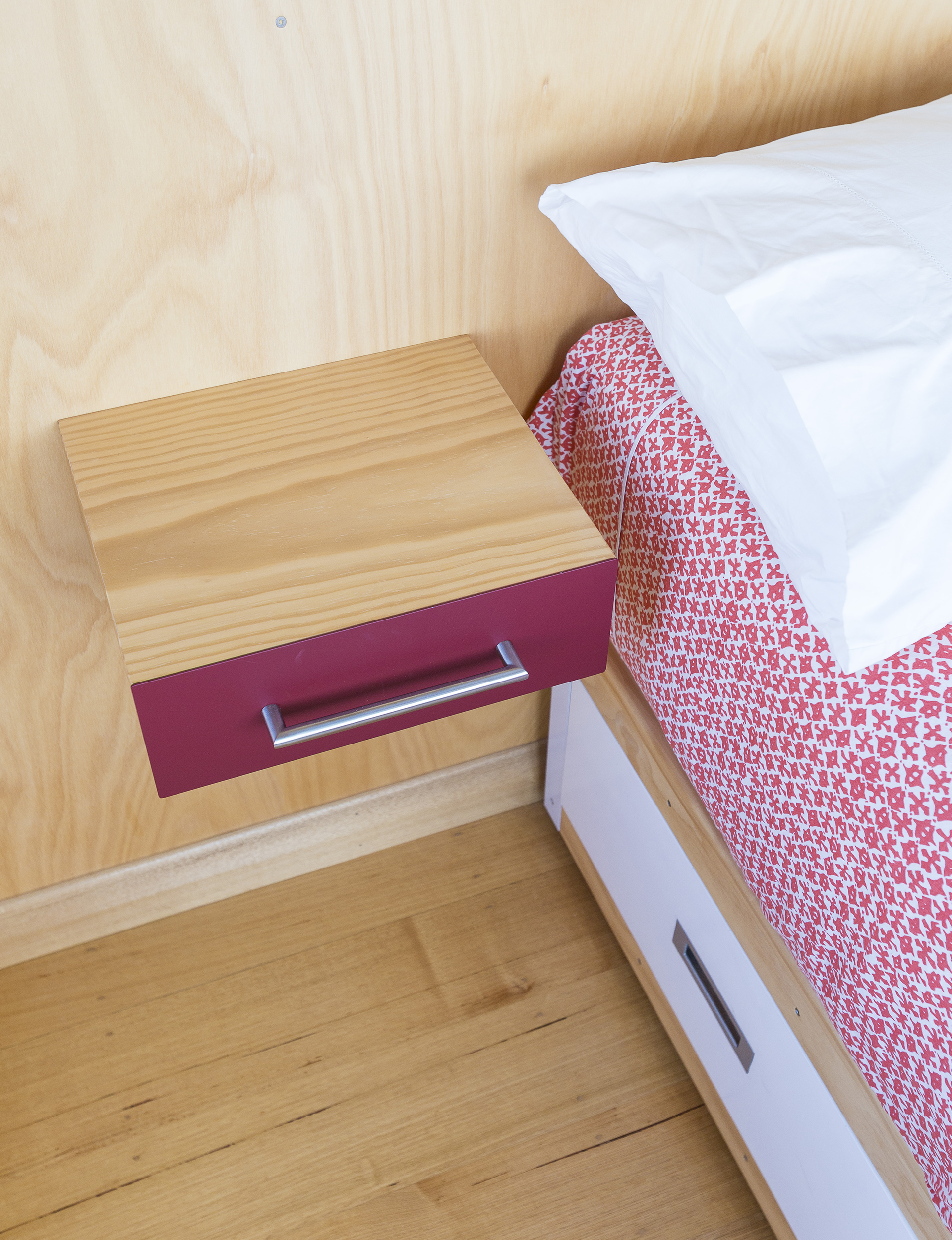
While the humble shape of the dwelling is akin to many others on the island, the combination of Walker’s refined design and Candish’s meticulous handiwork ensures this tiny house rises above its stature. Externally, paired doubles of posts are “a Malcolmism” that lift the roof to the sky while chunky, pa-like railings march in crisp formation around a deck that steps in and out to follow the line of the interior.
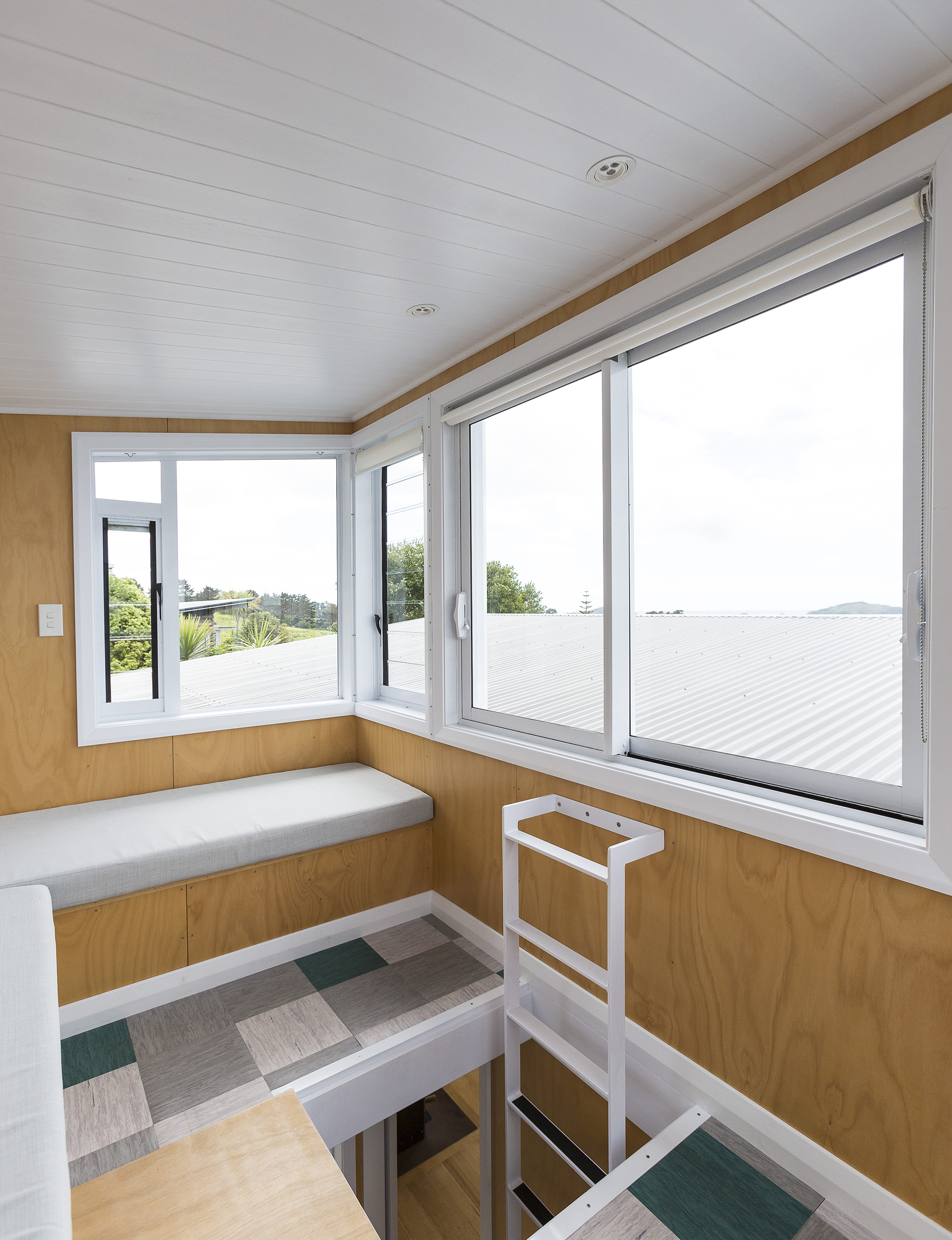
The junctions that make up the structural jigsaw are celebrated in many ways. “Having this house is like owning a boat; all year round it is exposed to winds, and everything has to stand up to the harsh elements. I love to see the fixings,” says Candish.

So 14-guage purlin screws, rather than nails, drive in the 150mm deck railings; stainless-steel braces in cross formation reinforce the decking roof and Candish even had some copper end caps custom-made for the handrails. “They cost $2 each, they’re folded like little ashtrays and protect the end grain from water getting in which can split the timber.”
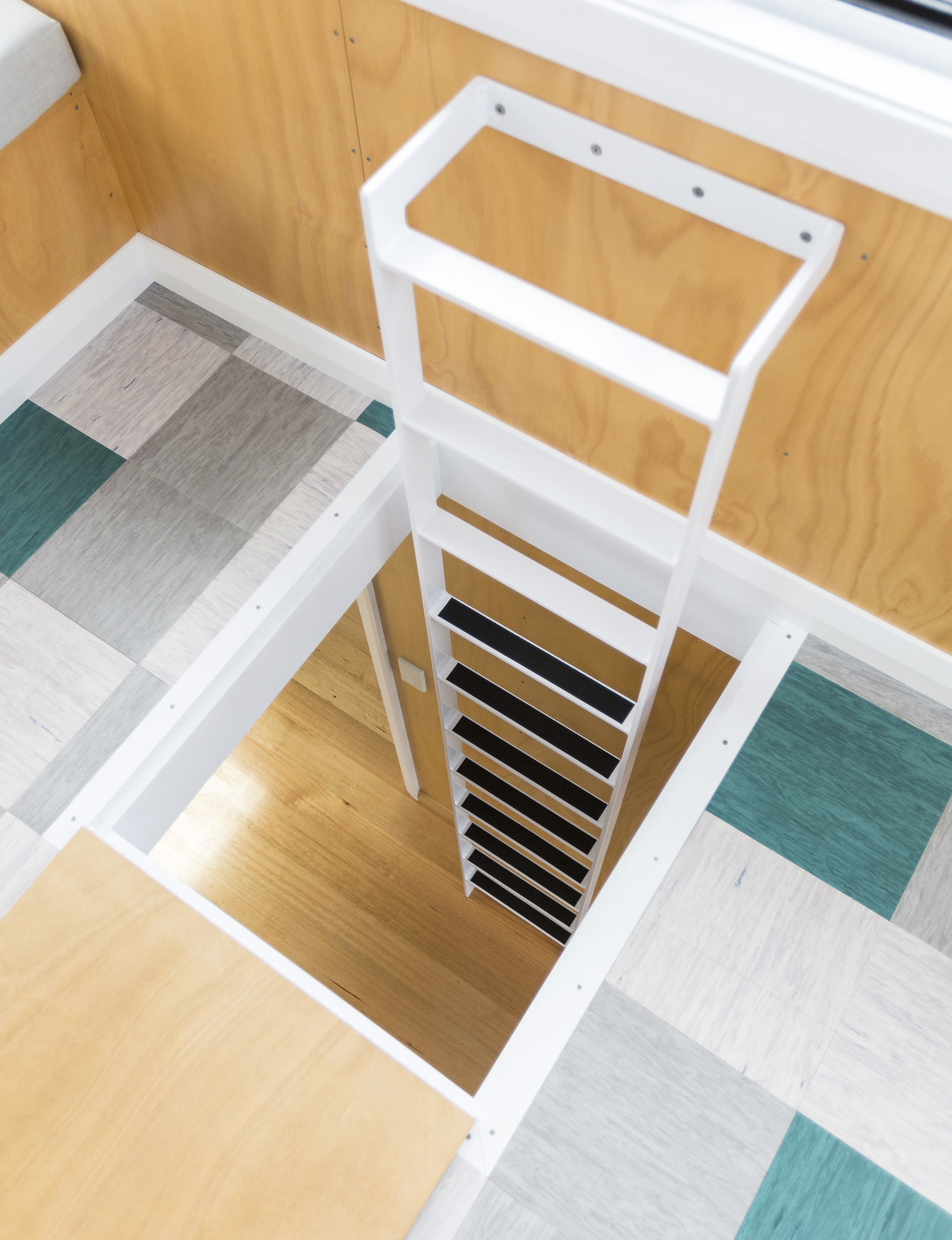
Painstaking hours were spent crafting the spacers and strips that create a pallet-like platform to the deck – a technique which gives the illusion of a home that hovers above the ground. Internally, hoop-pine ply wall linings are glued and screwed as another bracing element. The kitchen, with just one small but workable stainless bench, features duck-egg blue cabinetry that speaks of another era. “It was repainted as my first attempt came out an unusual peppermint green,” explains Candish. A patient practitioner, he rounded the corners on all the cabinet doors by hand. He likes the fact that this softens the aesthetic, and gives it a crafted quality. “Everything in town is so slick.”
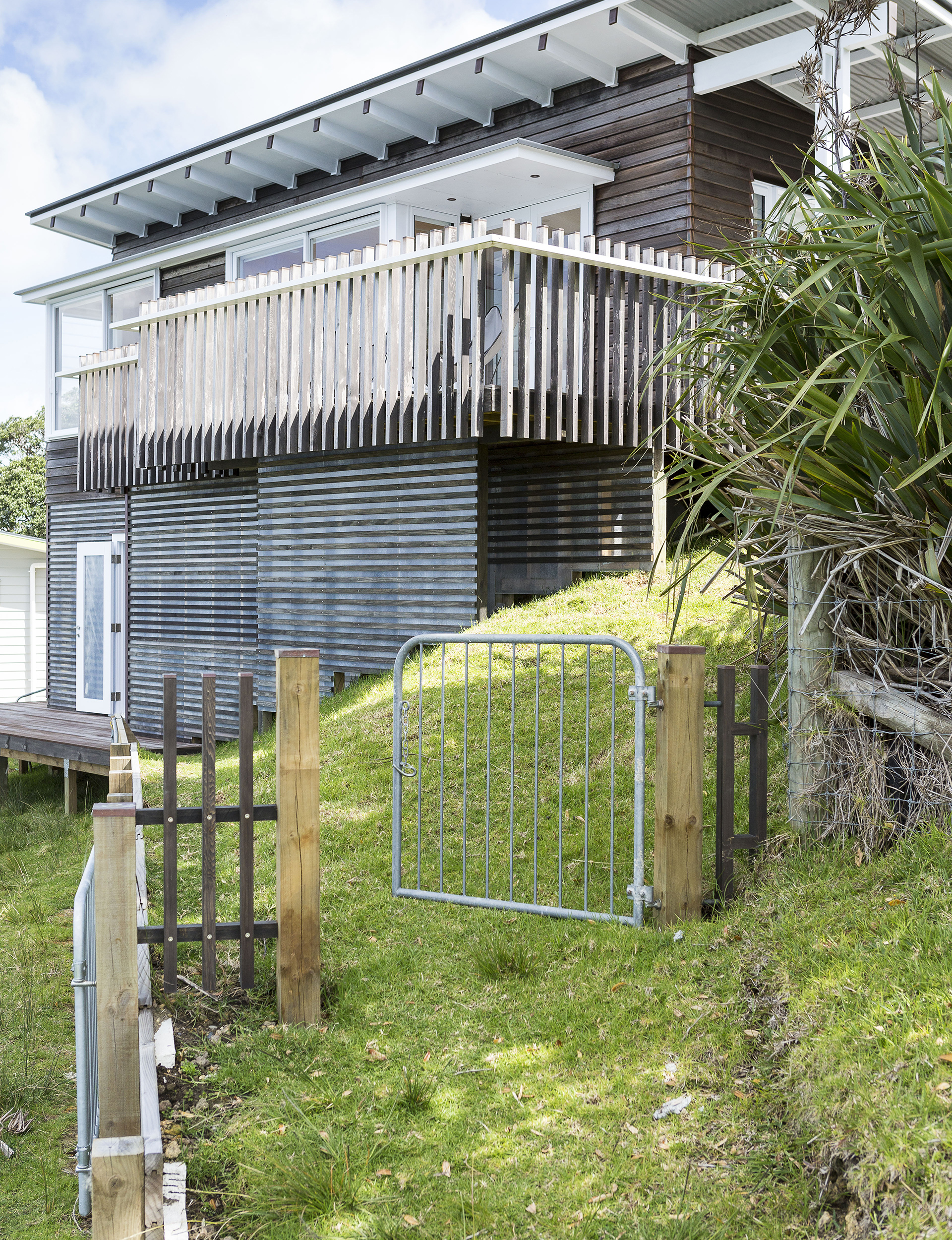
On a hunk of water-locked land where the population is sparse, self-sufficiency is a given. Louvre windows ensure healthy air flow, the septic tank is shared with the neighbouring property and four solar panels and a battery bank provide enough energy for this life less ordinary. Building here has been an unhurried, careful affair. And, while the well-known cheese advert reminds us that “good things take time”, measured progress over years also allows us the time to appreciate the journey.
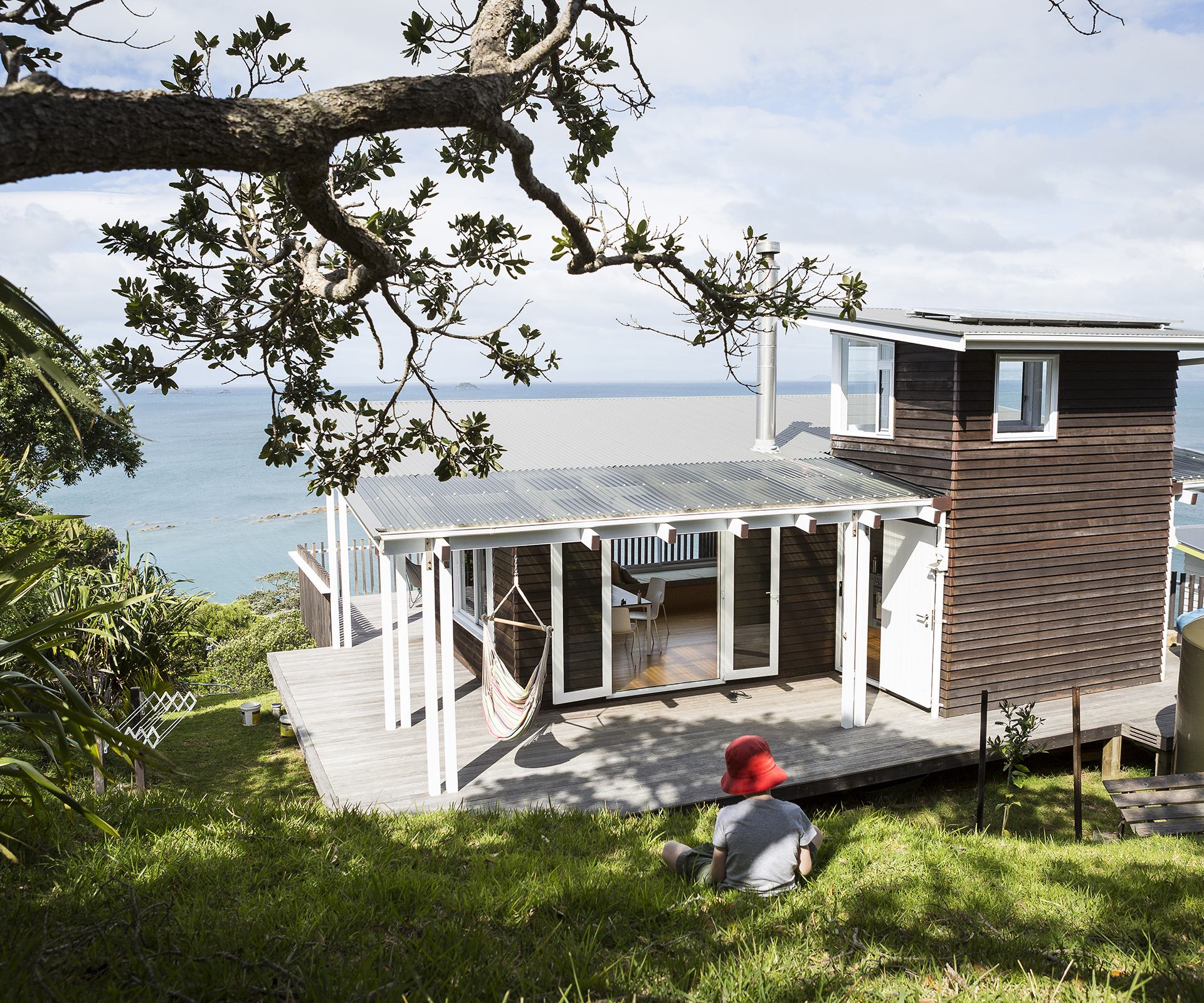
“When I have my head down cutting a bit of wood, I’ll look up and out over the row of olive trees to see someone snorkelling or fishing in the bay. I never get tired of it,” says Candish.
See more of Malcolm Walker’s projects here.
Words by: Claire McCall. Photos by: Duncan Innes. Production by: Janice Kumar-Ward.




